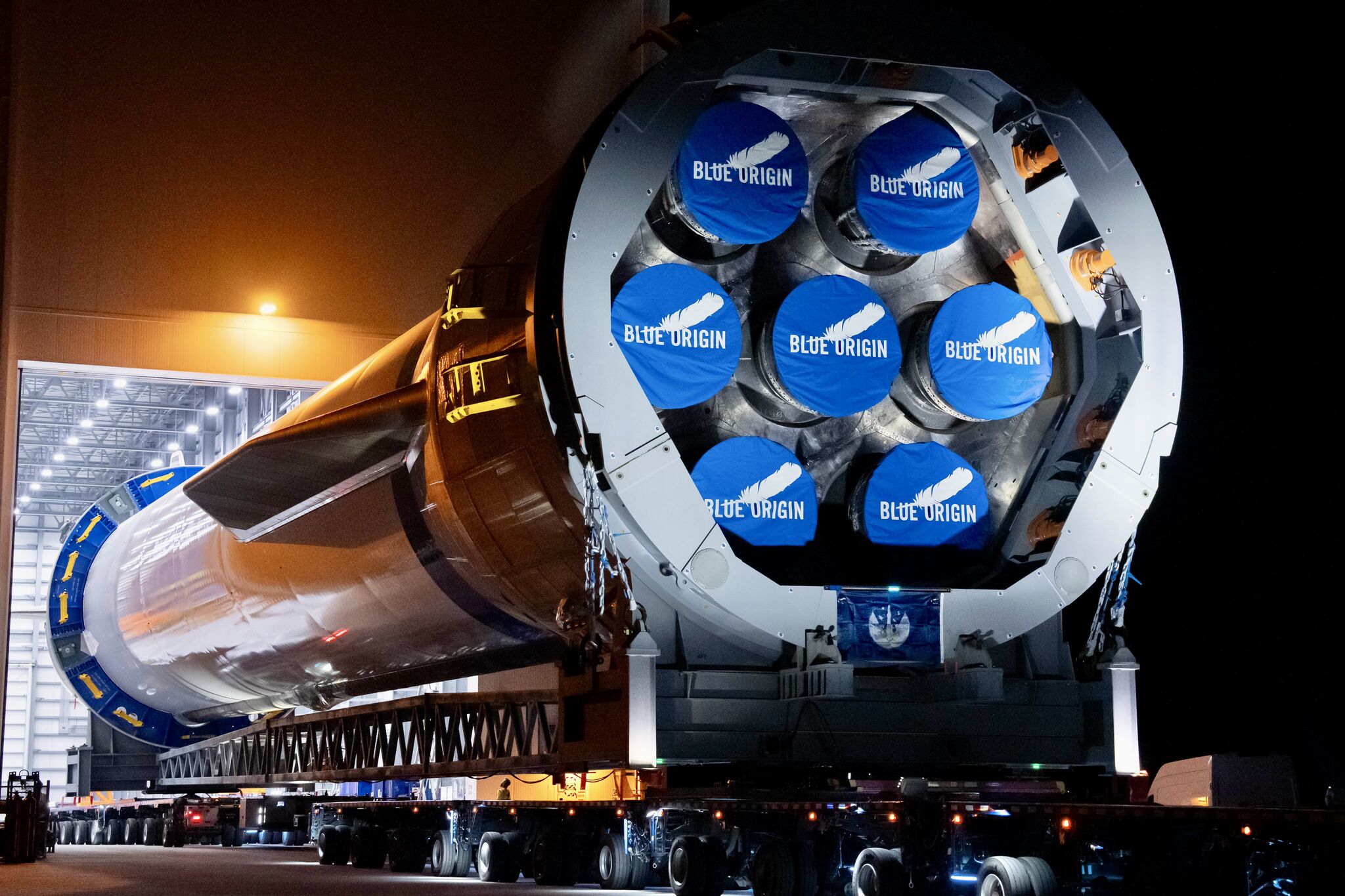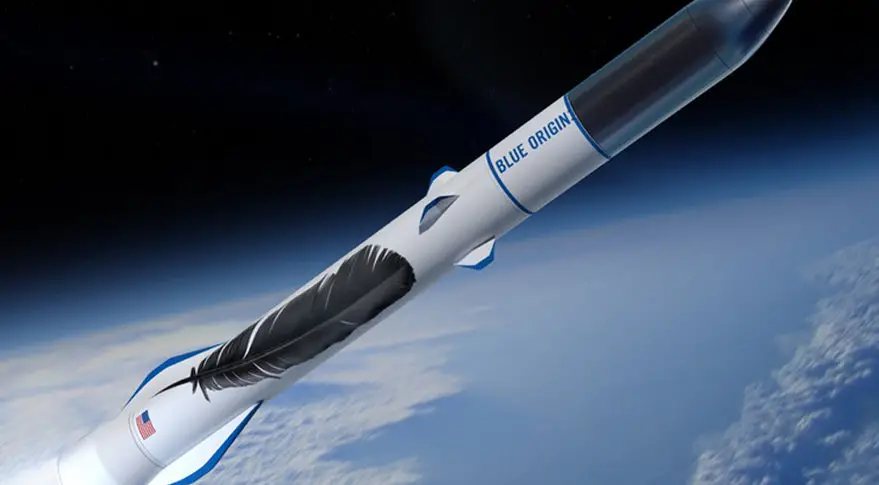Key Takeaways
- Blue Origin moved the massive New Glenn rocket’s first stage to Cape Canaveral’s launch site, signaling imminent launch preparations.
- To transport the 310-foot booster, Blue Origin used GERT, its custom “Giant Enormous Rocket Truck” with 22 axles and 176 tires.
- Before launch, New Glenn must complete a fully fueled wet dress rehearsal and ignite its first-stage BE-4 engines.
- The first New Glenn flight aims to use a reusable booster, landing on a droneship similar to SpaceX’s system.
- With setbacks in October, Blue Origin hopes to launch by December, if no major issues arise.
___________
New Glenn’s 310-foot rocket transporter sports 176 wheels and 505 horsepower for maneuvering.

A Major Milestone: First Stage at the Launch Site
Blue Origin’s New Glenn rocket project took a big step closer to launch when the rocket’s first stage was transported to the launch pad at Cape Canaveral Space Force Station in Florida. This move, occurring on a Tuesday night, signifies that the New Glenn rocket’s development is nearing completion, marking an important milestone for Blue Origin. CEO Dave Limp shared that, although Blue Origin’s rocket factory is nearby, the rocket’s size necessitated a complex transport route. Known as GERT, or “Giant Enormous Rocket Truck,” the company’s custom-built transporter has 22 axles and 176 tires and relies on an Oshkosh M1070 truck with 505 horsepower for towing. Due to the size and height of the New Glenn’s booster, GERT had to travel 23 miles to reach the launch site, ensuring safe navigation around any low-clearance infrastructure.
Testing and Final Steps Toward Launch
With the first stage now on-site, Blue Origin is gearing up for the final series of tests required before launch. New Glenn is designed as a fully reusable heavy-lift rocket, joining a competitive U.S. market currently dominated by SpaceX’s Falcon Heavy and Starship rockets. Before its debut, New Glenn must pass two essential milestones: a wet dress rehearsal and a hot-fire test. During the dress rehearsal, engineers will fully fuel the rocket and validate its ground systems, simulating a real launch sequence. Then, the hot-fire test will ignite the seven BE-4 rocket engines on the first stage for several seconds, assessing the stage’s performance under launch conditions. Last month, Blue Origin successfully tested the New Glenn’s second stage by igniting its two BE-3U engines for 15 seconds. These engines, powered by liquid oxygen and hydrogen, produce 173,000 pounds of thrust, confirming the functionality of the upper stage.

This final stretch brings its own challenges, as the first and second stages will be mated and integrated with ground systems for the first time. Blue Origin will need to carefully manage the complex task of synchronizing these parts, but the company’s progress in recent weeks suggests they are on track to achieve a full test run by year’s end.
Can Blue Origin Reach Orbit This Year?
Founder Jeff Bezos has been urging the company to meet its target of launching New Glenn by the end of 2023. However, Blue Origin has already postponed an October launch and a planned Mars-bound payload launch for NASA. For comparison, SpaceX’s Falcon Heavy took roughly 40 days between its first appearance on the launch pad and its initial liftoff, after several years of operational experience. Blue Origin, facing the same 40-day window, will likely need until early to mid-December for New Glenn’s first flight, considering the unique complexities involved.
If successful, the New Glenn rocket’s launch will solidify Blue Origin’s role in the private heavy-lift sector, representing a shift toward commercially driven space exploration in the U.S. With New Glenn’s reusable first stage and significant payload capacity, Blue Origin hopes to demonstrate new standards in the space industry, providing a cost-effective and sustainable approach to launching heavy payloads into orbit.




It feels like you’ve read my mind! You seem to know so much about this topic, as if you wrote the book on it. Adding some visuals could make it even more engaging. Excellent read—I’ll definitely be back!